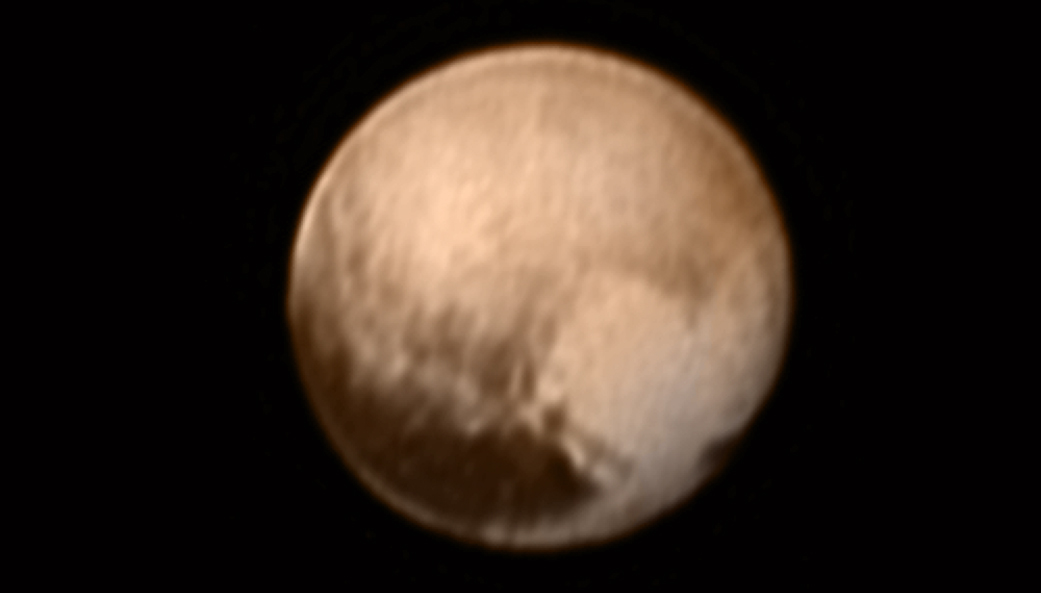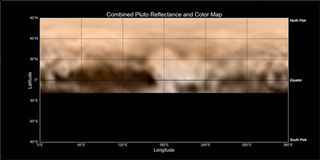
Pluto looks especially welcoming in a new photo by NASA's approaching New Horizons probe.
The image, which New Horizons took yesterday (July 7) when it was less than 5 million miles (8 million kilometers) from Pluto, shows a large, heart-shaped feature on the dwarf planet's surface.
The bright "heart" is about 1,200 miles (2,000 km) wide, NASA officials said. To its left lies an 1,860-mile-long (3,000 km) dark patch along Pluto's equator that mission scientists are calling "the whale."
New Horizons should get much better looks at both of these intriguing features in the coming days — especially during its July 14 flyby, when the probe will zoom within 7,800 miles (12,500 km) of Pluto's surface.
"The next time we see this part of Pluto at closest approach, a portion of this region will be imaged at about 500 times better resolution than we see today," Jeff Moore, New Horizons' geology, geophysics and imaging team leader, said in a statement. "It will be incredible!" added Moore, who's based at NASA's Ames Research Center in Mountain View, California.
The New Horizons team received the new photo early this morning (July 8). (It takes about 4.5 hours for data and communications to travel from the spacecraft to Earth, since the two are separated by about 3 billion miles, or 4.8 billion km.)
The image is the first one to come back down to Earth since Saturday (July 4), when New Horizons suffered a glitch that briefly sent it into safe mode, NASA officials said. The spacecraft is now back up to speed, and has in fact begun its close-approach science operations — a choreographed sequence of observations that lasts nine days.
Get the Space.com Newsletter
Breaking space news, the latest updates on rocket launches, skywatching events and more!

"The whale" also features in New Horizons' latest color map of Pluto, which is based on photos New Horizons took from June 27 to July 3. The map reveals a bright, 200-mile-wide (320 km) ring-shaped feature lying just above the whale's tail.
The doughnutlike feature resembles impact craters and volcanoes seen on other solar system bodies, but mission scientists will wait for more detailed images before they begin a serious attempt at interpretation, NASA officials said.
Follow Mike Wall on Twitter @michaeldwall and Google+. Follow us @Spacedotcom, Facebook or Google+. Originally published on Space.com.
Join our Space Forums to keep talking space on the latest missions, night sky and more! And if you have a news tip, correction or comment, let us know at: community@space.com.

Michael Wall is a Senior Space Writer with Space.com and joined the team in 2010. He primarily covers exoplanets, spaceflight and military space, but has been known to dabble in the space art beat. His book about the search for alien life, "Out There," was published on Nov. 13, 2018. Before becoming a science writer, Michael worked as a herpetologist and wildlife biologist. He has a Ph.D. in evolutionary biology from the University of Sydney, Australia, a bachelor's degree from the University of Arizona, and a graduate certificate in science writing from the University of California, Santa Cruz. To find out what his latest project is, you can follow Michael on Twitter.